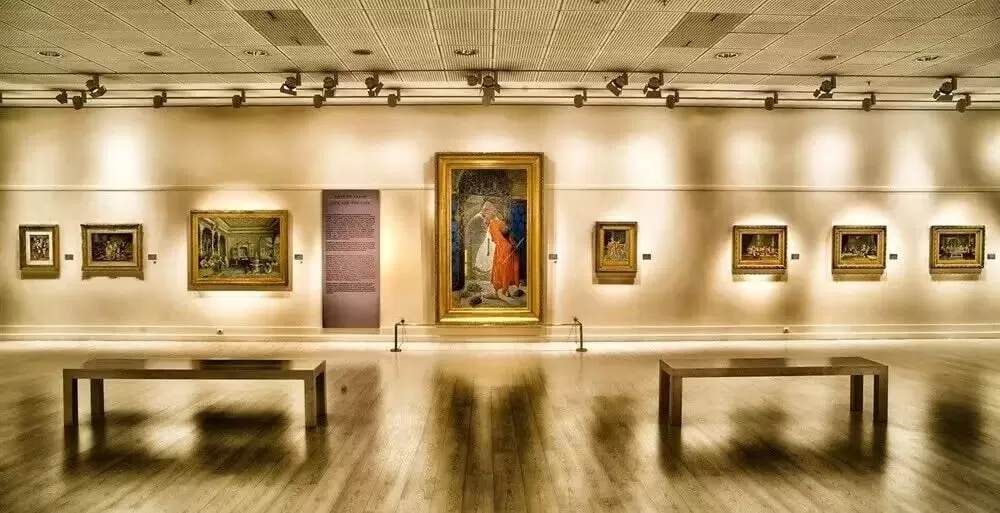Entertainment
Hidden Treasures: The Surprising Stories Behind Rediscovered Art
Manon 29/11/2024
Entertainment
Manon 29/11/2024

Imagine stumbling upon a long-forgotten masterpiece in your attic or finding an artwork that had been mistaken for an insignificant object, only to later learn it’s worth millions. Throughout history, many art treasures have been rediscovered in the most unlikely places—hidden away in attics, garages, or even as everyday objects like doorstops. These unexpected finds not only captivate the imagination but also offer valuable insights into the evolving nature of cultural value and the preservation of our artistic heritage. In this article, we’ll dive into some remarkable stories of rediscovered art and explore the profound implications they have on how we view and protect our cultural history.
Rediscovered Art: Amazing Finds in Unlikely Places
Art history is full of stories where masterpieces were hidden or lost for years before being rediscovered in the most surprising places. One of the most famous stories of rediscovery is that of The Salvator Mundi, a painting once attributed to Leonardo da Vinci. The painting, which had been stored in a private collection and overlooked by many, was mistaken for a mere copy until it was authenticated as an original da Vinci in 2017. It was eventually sold for a staggering $450 million, making it the most expensive painting ever auctioned. The fact that it had been tucked away in a garage, in poor condition and unnoticed for years, adds to the incredible nature of this discovery.
Similarly, a rare Goya painting was uncovered in 2014 in a farmhouse attic in France. Originally thought to be a faded copy, the artwork turned out to be an authentic Francisco Goya piece, which had likely been lost over time. The find shocked the art world and raised serious concerns about how artworks are preserved and whether their significance can be recognized before it’s too late. Without the curiosity of the farmhouse’s owner, this valuable piece might have remained forgotten for good.
The Cultural Significance of Rediscovered Art
Rediscovered artworks often raise important questions about the value and preservation of culture. These pieces not only carry artistic and historical value but also challenge how we assess their worth. Many artworks that were once overlooked or undervalued are now considered priceless treasures. The discovery of hidden gems reminds us that art’s cultural importance can grow and evolve over time.
Art often falls in and out of fashion, and pieces that were once dismissed can later be seen in a new light, making the process of rediscovery even more compelling. For example, many artworks were once thought to be insignificant, only to gain recognition years or even centuries later. This shifting perspective on the value of art speaks to the fluid nature of cultural importance and the complex relationship between art, history, and society.
The Challenges of Preserving Rediscovered Art
Once art is rediscovered, the question of preservation often arises. Should all artworks, once found, be restored? If so, how much intervention is acceptable without losing the original essence of the piece? Restoring an artwork can be a delicate process. Too much restoration may erase the artist’s original intent, while too little can leave the piece in poor condition, diminishing its value.
The Goya painting found in France, for example, posed unique challenges for conservation experts. Restorers had to carefully balance the need to repair and preserve the artwork without altering its original character. The dilemma over how to maintain a piece of art’s integrity is central to the work of art conservators. For rediscovered pieces, particularly those that have been damaged or neglected, determining the extent of restoration is a critical issue that raises important questions about the responsibility of caretakers and the art community at large.

Rediscovered art, whether found hidden in an attic or mistaken for an everyday object, offers a fascinating glimpse into the ever-changing perception of cultural value. These surprising finds not only reignite interest in forgotten masterpieces but also spark crucial conversations about how we preserve our artistic heritage. They remind us that art is not static; its importance can grow and change as time passes. The stories behind rediscovered artworks highlight the need for continued preservation efforts and for greater recognition of the cultural significance of art, no matter where it is found.
As we continue to uncover hidden treasures in the most unlikely places, we are reminded that art’s value is not always immediately apparent. Sometimes, the most extraordinary works are the ones we least expect to find. This evolving relationship between discovery and preservation ensures that art’s story is never fully written—there are always new chapters to uncover, and new ways to appreciate the masterpieces of our past.
